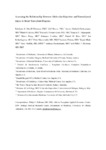| dc.contributor.author | Madill-Thomsen, Katelynn S. | |
| dc.contributor.author | Reeve, Jeff | |
| dc.contributor.author | Aliabadi-Zuckermann, Arezu | |
| dc.contributor.author | Cadeiras, Martin | |
| dc.contributor.author | Crespo-Leiro, María Generosa | |
| dc.contributor.author | Depasquale, Eugene D. | |
| dc.contributor.author | Deng, Mario | |
| dc.contributor.author | Goeckler, Johannes | |
| dc.contributor.author | Kim, Daniel H. | |
| dc.contributor.author | Kobashigawa, Jon | |
| dc.contributor.author | MacDonald, Peter | |
| dc.contributor.author | Potena, Luciano | |
| dc.contributor.author | Shah, Keyur | |
| dc.contributor.author | Stehlik, Josef | |
| dc.contributor.author | Zuckermann, Andreas | |
| dc.contributor.author | Halloran, Philip F. | |
| dc.date.accessioned | 2023-12-12T09:42:09Z | |
| dc.date.available | 2023-12-12T09:42:09Z | |
| dc.date.issued | 2022-11 | |
| dc.identifier.citation | Madill-Thomsen KS, Reeve J, Aliabadi-Zuckermann A, Cadeiras M, Crespo-Leiro MG, Depasquale EC, Deng M, Goekler J, Kim DH, Kobashigawa J, Macdonald P, Potena L, Shah K, Stehlik J, Zuckermann A, Halloran PF. Assessing the relationship between molecular rejection and parenchymal injury in heart transplant biopsies. Transplantation. 2022 Nov 1;106(11):2205-2216. | es_ES |
| dc.identifier.issn | 0041-1337 | |
| dc.identifier.uri | http://hdl.handle.net/2183/34459 | |
| dc.description.abstract | [Abstract] Background: The INTERHEART study (ClinicalTrials.gov #NCT02670408) used genome-wide microarrays to detect rejection in endomyocardial biopsies; however, many heart transplants with no rejection have late dysfunction and impaired survival. We used the microarray measurements to develop a molecular classification of parenchymal injury.
Methods: In 1320 endomyocardial biopsies from 645 patients previously studied for rejection-associated transcripts, we measured the expression of 10 injury-induced transcript sets: 5 induced by recent injury; 2 reflecting macrophage infiltration; 2 normal heart transcript sets; and immunoglobulin transcripts, which correlate with time. We used archetypal clustering to assign injury groups.
Results: Injury transcript sets correlated with impaired function. Archetypal clustering based on the expression of injury transcript sets assigned each biopsy to 1 of 5 injury groups: 87 Severe-injury, 221 Late-injury, and 3 with lesser degrees of injury, 376 No-injury, 526 Mild-injury, and 110 Moderate-injury. Severe-injury had extensive loss of normal transcripts (dedifferentiation) and increase in macrophage and injury-induced transcripts. Late-injury was characterized by high immunoglobulin transcript expression. In Severe- and Late-injury, function was depressed, and short-term graft failure was increased, even in hearts with no rejection. T cell-mediated rejection almost always had parenchymal injury, and 85% had Severe- or Late-injury. In contrast, early antibody-mediated rejection (AMR) had little injury, but late AMR often had the Late-injury state.
Conclusions: Characterizing heart transplants for their injury state provides new understanding of dysfunction and outcomes and demonstrates the differential impact of T cell-mediated rejection versus AMR on the parenchyma. Slow deterioration from AMR emerges as a major contributor to late dysfunction. | es_ES |
| dc.language.iso | eng | es_ES |
| dc.publisher | Wolters Kluwer | es_ES |
| dc.relation.uri | https://doi.org/10.1097/tp.0000000000004231 | es_ES |
| dc.subject | Heart transplantation | es_ES |
| dc.subject | Kidney transplantation | es_ES |
| dc.title | Assessing the relationship between molecular rejection and parenchymal injury in heart transplant biopsies | es_ES |
| dc.type | info:eu-repo/semantics/article | es_ES |
| dc.rights.access | info:eu-repo/semantics/openAccess | es_ES |
| UDC.journalTitle | Transplantation | es_ES |
| UDC.volume | 106 | es_ES |
| UDC.issue | 11 | es_ES |
| UDC.startPage | 2205 | es_ES |
| UDC.endPage | 2216 | es_ES |











